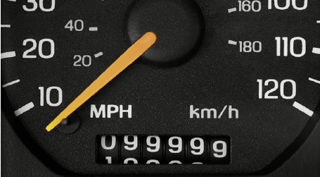Denis Keenan, managing director of automotive information supplier KeeResources, speaks about residual values and the state of the UK car market.
With KeeResources’ previously noted concerns about growth in the new car market above the 2m original estimate proving prescient in light of the SMMT’s recently revised 2.2m+ New Car Market for 2013, the softening of future values in 2016 and 2017 will undoubtedly continue. It should be noted that damage to RVs of this shift should not be devastating in effect, rather it will be a reset of the remarkably high £values seen on used vehicles today.
This is especially true as the de-fleet timings are offset to some degree by a higher proportion than ever of fleet and leasing stock being ordered on four-year contracts, and the fact that the growth will also continue on two-year, relatively quick churn (incentivised) contracts being written by some leasing companies and manufacturer’s captives. The resale volumes are therefore spread across a far wider range of vehicle age profiles than at prior times of high new market volumes. In general terms, the increased volumes of two-year de-fleets will have a downward drag on nearly new values to a far greater scale in percentage & £values than upon three-five year values.
The 2.6m market by 2018 predicted by some is, in our terms, a number well beyond the natural unforced UK market, and even if full UK growth recovery is in place by 2018, one which we believe to be circa 2m or slightly more. This 2.6m, should it prove to be the case, would certainly have a far more significant downward effect on RVs overall – anything up to 12-15 per cent, sector and model dependent (from the highs of today).
Another major factor which will have impact is the fact that the effects of public sector job losses have yet to be felt, such was the offset nature the government pushed back the cuts into 2014 and 2015. If the private sector workforce cannot accommodate all of these job losses (which we suspect to be the case), unemployment during that period will increase, removing buyers from both used and new markets.
This increase of up to ten per cent from original forecast for 2013 could occur again in 2014 potentially creating a 2.3-2.4m market, to some degree aided by the continuing and widespread EU financial pain which shows no sign of abating in the short to mid-term, despite the news that the Eurozone is seemingly back in small percentage growth overall – the simple fact remains that they have a very long way to go to get back to full fiscal health.
The UK can, albeit with extra incentives, carry these new car volumes, simply with a concomitant drop in values of used. From a consumer perspective, this is not all bad news, as the market will simply become less shortage-driven and used values less “inflated”. Some asset owners may have a subtly different view if they see the future values they have in their books start to fall below expectation – this largely comes down to the quality of their forecasting in macro terms, but the reduction of RVs is the single largest influence on rental costs, so businesses and consumers of new vehicles should realistically expect fairly significant increases in operating costs (rentals or monthly finance payments) over the next couple of years.




















Steve @ Campervan Hire Italy - 09/09/2013 05:59
This increase will be good turning point in car market. Keep posting.